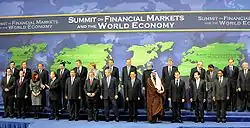中等強國
定義
中等強國並沒有統一的定義。某些研究人員以GNP來劃分中等強國。在經濟方面來說,中等強國普遍上是指國家的經濟體系不大,但也不小。但是,經濟並不是劃分中等強國的標準。在原本的定義中,中等強國指一個國家對國際某程度上有一些影響力,但其影響力並不遍佈世界每個角落。但是,這個定義並沒有成為標準。因此,某些中等強國列表中可能包含「大國」或「小國」。
中等強國列表
以下是一個中等強國列表,所有被列出的國家皆被學者或專家承認其中等強國的地位。只是中等強國和大國之間的重複國家,以及中等強國和小國之間的重覆國家,其邊界定義模糊。
![]() 美國、
美國、![]() 中华人民共和国、
中华人民共和国、![]() 俄羅斯、
俄羅斯、![]() 英國和
英國和![]() 法國都是大國,而非中等強國,全因其軍事和戰略地位顯赫,以及其有核国家、聯合國安理會常任理事國的地位。而
法國都是大國,而非中等強國,全因其軍事和戰略地位顯赫,以及其有核国家、聯合國安理會常任理事國的地位。而![]() 美國更加是全球唯一的超級大國。
美國更加是全球唯一的超級大國。
有些學者或專家也認為![]() 日本、
日本、![]() 德國、
德國、![]() 印度、
印度、![]() 巴西都是大國,而非中等強國。原因是這四國,為最有實力爭取聯合國安全理事會常任理事國擴增改革的新成員候選國;這四國並組成四國聯盟,希望通過相互支持,推動未來改革的成功。此外,這四國在國際間也擁有不小的影響力,其中
巴西都是大國,而非中等強國。原因是這四國,為最有實力爭取聯合國安全理事會常任理事國擴增改革的新成員候選國;這四國並組成四國聯盟,希望通過相互支持,推動未來改革的成功。此外,這四國在國際間也擁有不小的影響力,其中![]() 日本、
日本、![]() 德國是七大工業國組織成員國,而
德國是七大工業國組織成員國,而![]() 印度、
印度、![]() 巴西則是金磚成員國。
巴西則是金磚成員國。
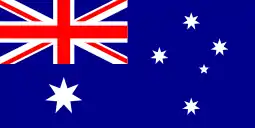 澳大利亚[3][4][5][6][7]
澳大利亚[3][4][5][6][7] 奥地利[8]
奥地利[8]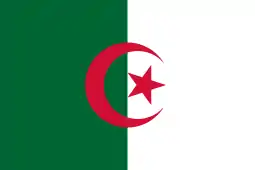 阿尔及利亚[9]
阿尔及利亚[9] 阿根廷[10][11][12]
阿根廷[10][11][12]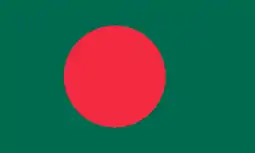 [8][13]
[8][13].svg.png.webp) 比利時[8][14][15]
比利時[8][14][15].svg.png.webp) 加拿大[3][7][16][17][18]
加拿大[3][7][16][17][18]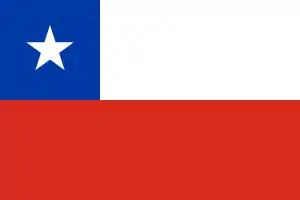 智利[14][19]
智利[14][19]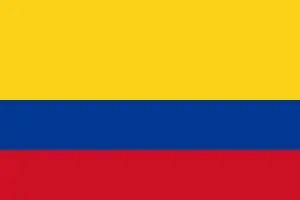 哥伦比亚[14][19]
哥伦比亚[14][19]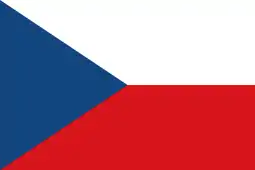 捷克 [8]
捷克 [8] 丹麥[8][16][20]
丹麥[8][16][20]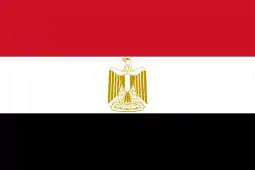 埃及[10][21][23]
埃及[10][21][23] 芬兰[8]
芬兰[8]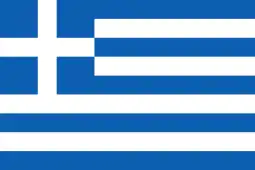 希臘[24]
希臘[24]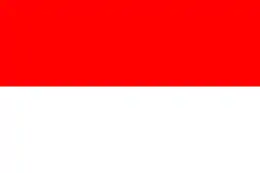 印尼[8][25]
印尼[8][25] 愛爾蘭[26]
愛爾蘭[26]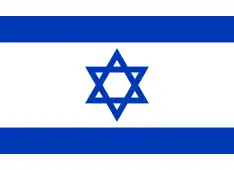 以色列[5][27][28]
以色列[5][27][28] 義大利[29][30]
義大利[29][30]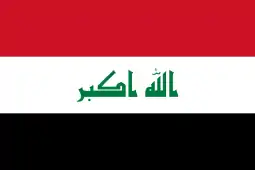 伊拉克[31][32]
伊拉克[31][32]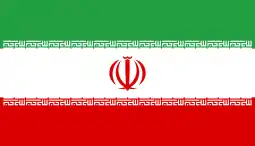 伊朗[31][33][34][35]
伊朗[31][33][34][35]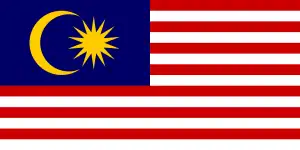 马来西亚[25][36][37]
马来西亚[25][36][37]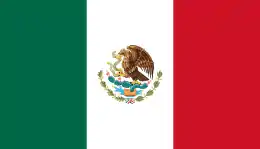 墨西哥[12][21][38][39][40]
墨西哥[12][21][38][39][40]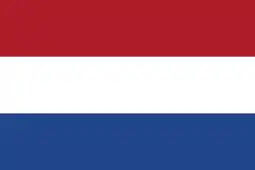 荷蘭[8][16][20]
荷蘭[8][16][20] 奈及利亞[8][21][36]
奈及利亞[8][21][36]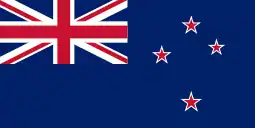 新西蘭[41]
新西蘭[41]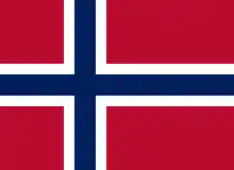 挪威[8][16][20]
挪威[8][16][20]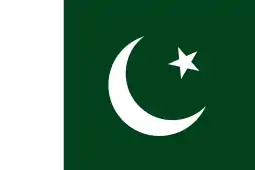 巴基斯坦 [42][43]
巴基斯坦 [42][43]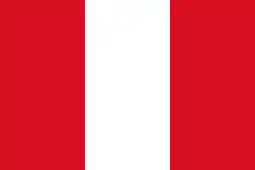 秘魯[12][19][44][45]
秘魯[12][19][44][45]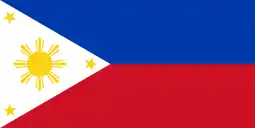 菲律賓[46]
菲律賓[46] 波蘭[8][39][9][47]
波蘭[8][39][9][47] 葡萄牙[48]
葡萄牙[48] 羅馬尼亞[8]
羅馬尼亞[8]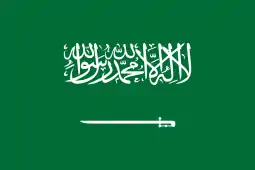 沙烏地阿拉伯[5][49][50]
沙烏地阿拉伯[5][49][50]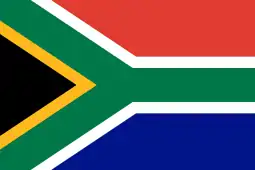 南非[44][51][52][53][54][55]
南非[44][51][52][53][54][55]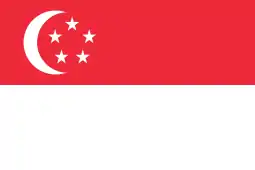 新加坡[56][57]
新加坡[56][57]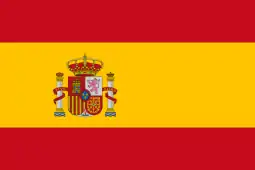 西班牙[8][48]
西班牙[8][48] 瑞士[8]
瑞士[8]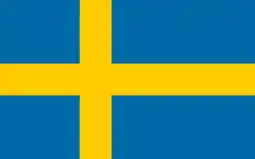 瑞典[8][5][20][58]
瑞典[8][5][20][58]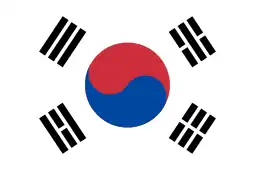 大韓民國[4][59][60][61][62]
大韓民國[4][59][60][61][62]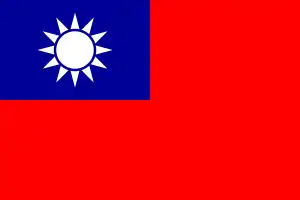 中華民國(臺灣)[46]
中華民國(臺灣)[46]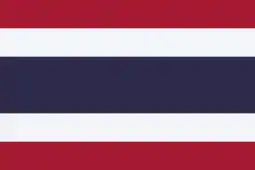 泰國[46]
泰國[46] 土耳其[21][63]
土耳其[21][63]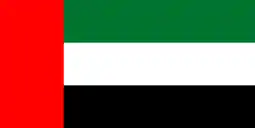 阿联酋[64][65]
阿联酋[64][65]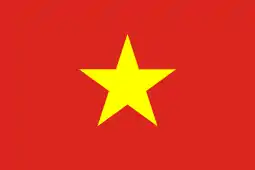 越南[46]
越南[46]
參考
- Yoshihide, Soeya. . [2020-03-15]. (原始内容存档于2020-04-07).
- Patrick James; Mark J. Kasoff. . University of Toronto Press. 2008: 265 [2012-10-12]. ISBN 978-0-8020-9468-1. (原始内容存档于2014-06-27).
- Jordaan, Edward. . [14 March 2015]. (原始内容存档于2015-09-24).
- Tobias Harris, 'Japan Accepts its "Middle-Power" Fate'. Far Eastern Economic Review Vol. 171, No. 6 (2008), p. 45: 'Japan is settling into a position as a middle power in Asia, sitting uneasily between the U.S., its security ally, and China, its most important economic partner. In this it finds itself in a situation similar to Australia, India, South Korea and the members of Asean.'
- Buzan, Barry. . Cambridge, United Kingdom: Polity Press. 2004: 71. ISBN 0-7456-3375-7.
- Hazleton WA (2005) Middle Power Bandwagoning? Australia's Security Relationship with the United States 页面存档备份,存于, allacademic
- Yasmi Adriansyah, 'Questioning Indonesia's place in the world', Asia Times (20 September 2011): 'Countries often categorized as middle power (MP) include Australia, Canada and Japan. The reasons for this categorization are the nations' advanced political-economic stature as well as their significant contribution to international cooperation and development. India and Brazil have recently become considered middle powers because of their rise in the global arena—particularly with the emerging notion of BRIC (Brazil, Russia, India and China).'
- Solomon S (1997) South African Foreign Policy and Middle Power Leadership 页面存档备份,存于, ISS
- Spero, Joshua. . Rowman & Littlefield. 2004: 206. ISBN 9780742535534. ISBN 0-7425-3553-3.
- Wurst J (2006) Middle Powers Initiative Briefing Paper 页面存档备份,存于, GSI
- Cooper AF (1997) Niche Diplomacy - Middle Powers after the Cold War 页面存档备份,存于, palgrave
- Bernard Wood, 'Towards North-South Middle Power Coalitions', in Middle Power Internationalism: The North-South Dimension, edited by Cranford Pratt (Montreal, McGill-Queen's University Press, 1990).
- Higgott RA, Cooper AF (1990) Middle Power Leadership and Coalition Building
- Inoguchi K (2002) The UN Disarmament Conference in Kyote 页面存档备份,存于
- Caplan G (2006) From Rwanda to Darfur: Lessons learned? 页面存档备份,存于, SudanTribune
- Behringer RM (2005) Middle Power Leadership on the Human Security Agenda 页面存档备份,存于, SAGE
- Crosby AD (1997) A Middle-Power Military in Alliance: Canada and NORAD, JSTOR
- Petersen K (2003) Quest to Reify Canada as a Middle Power 页面存档备份,存于, Dissident Voice
- Heine J (2006) On the Manner of Practising the New Diplomacy 页面存档备份,存于, ISN
- Pratt C (1990) Middle Power Internationalism 页面存档备份,存于, MQUP
- Andrew F. Cooper, Agata Antkiewicz and Timothy M. Shaw, 'Lessons from/for BRICSAM about South-North Relations at the Start of the 21st Century: Economic Size Trumps All Else?', International Studies Review, Vol. 9, No. 4 (Winter, 2007), pp. 675, 687.
- GILLEY, BRUCE. . The New York Times Company: 1. September 10, 2012 [14 March 2015]. (原始内容存档于2015-04-02).
- Thanos Veremēs (1997)The Military in greek Politics 页面存档备份,存于 "Black Rose Books"
- Jonathan H. Ping, Middle Power Statecraft: Indonesia, Malaysia, and the Asia Pacific (Aldershot: Ashgate Publishing, 2005).
- Middle Power Internationalism: The North-South Dimension, edited by Cranford Pratt (Montreal, McGill-Queen's University Press, 1990).
- . [2015-06-13]. (原始内容存档于2009-08-15).
- . [2015-06-13]. (原始内容存档于2016-03-04).
- "Operation Alba may be considered one of the most important instances in which Italy has acted as a regional power, taking the lead in executing a technically and politically coherent and determined strategy." See Federiga Bindi, Italy and the European Union (Washington, D.C.: Brookings Institution Press, 2011), p. 171.
- "Italy plays a prominent role in European and global military, cultural and diplomatic affairs. The country's European political, social and economic influence make it a major regional power." See Italy: Justice System and National Police Handbook, Vol. 1 (Washington, D.C.: International Business Publications, 2009), p. 9.
- Anoushiravan Ehteshami and Raymond Hinnesbusch, Syria and Iran: Middle Power in a Penetrated Regional System (London: Routledge, 1997).
- Samhat, Nayef H. . Policy Studies Journal. 2000, 28 (1): 11–26.
- Samhat, Nayef H. . Policy Studies Journal. 2000, 28 (1): 11–26.
- Ahouie M (2004) Iran Analysis Quarterly 页面存档备份,存于, MIT
- Foreign Affairs Committee (2006) Iran 页面存档备份,存于
- Mace G, Belanger L (1999) The Americas in Transition: The Contours of Regionalism 页面存档备份,存于 (p 153)
- Kim R. Nossal and Richard Stubbs, 'Mahathir's Malaysia: An Emerging Middle Power?' in Niche Diplomacy: Middle Powers After the Cold War, edited by Andrew F. Cooper (London: Macmillan, 1997).
- Louis Belanger and Gordon Mace, 'Middle Powers and Regionalism in the Americas: The Cases of Argentina and Mexico', in Niche Diplomacy: Middle Powers After the Cold War, edited by Andrew F. Cooper (London: Macmillan, 1997).
- Pierre G. Goad, 'Middle Powers to the Rescue?', Far Eastern Economic Review, Vol. 163, No. 24 (2000), p. 69.
- Pellicer O (2006) Mexico – a Reluctant Middle Power? 页面存档备份,存于, FES
- Middle Powers Initiative (2004) Building Bridges: What Middle Power Countries Should Do To Strengthen the NPT 页面存档备份,存于, GSI
- Cooper, Andrew F. . Public Diplomacy Magazine. [12 March 2015]. (原始内容存档于2017-06-29).
- Kamrava, Mehran. (PDF). [12 March 2015]. (原始内容 (PDF)存档于2013年10月7日).
- Gladys Lechini, Middle Powers: IBSA and the New South-South Cooperation. NACLA Report on the Americas, Vol. 40, No. 5 (2007): 28-33: 'Today, a new, more selective South-South cooperation has appeared, bringing some hope to the people of our regions. The trilateral alliance known as the India, Brazil, and South Africa Dialogue Forum, or IBSA, exemplifies the trend … The three member countries face the same problems and have similar interests. All three consider themselves "middle powers" and leaders of their respective regions, yet they have also been subject to pressures from the North.'
- Daniel Flemes, Emerging Middle Powers' Soft Balancing Strategy: State and Perspective of the IBSA Dialogue Forum. Hamburg: GIGA, 2007.
- Jonathan H. Ping Middle Power Statecraft 页面存档备份,存于 (p 104)
- Kirton J (2006) Harper’s Foreign Policy Success? 页面存档备份,存于
- according to Yves Lacoste, Géopolitique, Larousse, 2009,p. 134, both Spain and Portugal exert a real influence in Africa and in the Americas.
- . [2015-06-13]. (原始内容存档于2012-05-29).
- . [2015-06-13]. (原始内容存档于2004-08-26).
- Peter Vale, 'South Africa: Understanding the Upstairs and the Downstairs', in Niche Diplomacy: Middle Powers After the Cold War, edited by Andrew F. Cooper (London: Macmillan, 1997).
- Janis Van Der Westhuizen, 'South Africa's Emergence as a Middle Power', Third World Quarterly, Vol. 19, No. 3 (1998), pp. 435-455.
- Pfister R (2006) The Apartheid Republuc and African States 页面存档备份,存于, H-Net
- Eduard Jordaan, 'Barking at the Big Dogs: South Africa's Foreign Policy Towards the Middle East', Round Table, Vol. 97, No. 397 (2008), pp. 547-549.
- Flemes, Daniel, Emerging Middle Powers' Soft Balancing Strategy: State and Perspectives of the IBSA Dialogue Forum (August 1, 2007). GIGA Working Paper No. 57. doi:10.2139/ssrn.1007692
- Loo BF (2005) Transforming Singapore's Military Security Landscape: Problems and Prospects 页面存档备份,存于, allacademic
- Tan ATH (1999) Singapore's Defence: Capabilities, Trends, and Implications 页面存档备份,存于, questia
- Rudengren J, Gisle P, Brann K (1995) Middle Power Clout: Sweden And The Development Banks 页面存档备份,存于
- Armstrong DF (1997) South Korea's foreign policy in the post-Cold War era: A middle power perspective 页面存档备份,存于
- Gilbert Rozman, 'South Korea and Sino-Japanese Rivalry: A Middle Power's Options Within the East Asia Core Triangle', Pacific Review, Vol. 20, No. 2 (2007), pp. 197-220.
- Woosang Kim, 'Korea as a Middle Power in Northeast Asian Security, in The United States and Northeast Asia: Debates, Issues, and New Order, edited by G. John Ikenbgerry and Chung-in Moon (Lantham: Rowman & Littlefield, 2008).
- Sheridan, Greg. . The Australian. 27 November 2008 [2012-10-12]. (原始内容存档于2012-09-12).
- Meltem Myftyler and Myberra Yyksel, 'Turkey: A Middle Power in the New Order', in Niche Diplomacy: Middle Powers After the Cold War, edited by Andrew F. Cooper (London: Macmillan, 1997).
- Laipson, Ellen. . The National Interest. 3 September 2014 [26 October 2014]. (原始内容存档于2020-07-13).
- Evans, Gareth. . 29 June 2011 [26 October 2014]. (原始内容存档于2020-07-13).
延伸閱讀
- books.google.com页面存档备份,存于 Weak States in the International System. By Michael I. Handel.
- South African Foreign Policy and Middle Power Leadership
- Relocating Middle Powers: Australia and Canada in a Changing World Order页面存档备份,存于
- Middle Power Internationalism页面存档备份,存于 (Book info)
- Emerging Powers: Governance in a Changing Global Order, a Queen’s Centre for International Relations annual report
This article is issued from Wikipedia. The text is licensed under Creative Commons - Attribution - Sharealike. Additional terms may apply for the media files.
